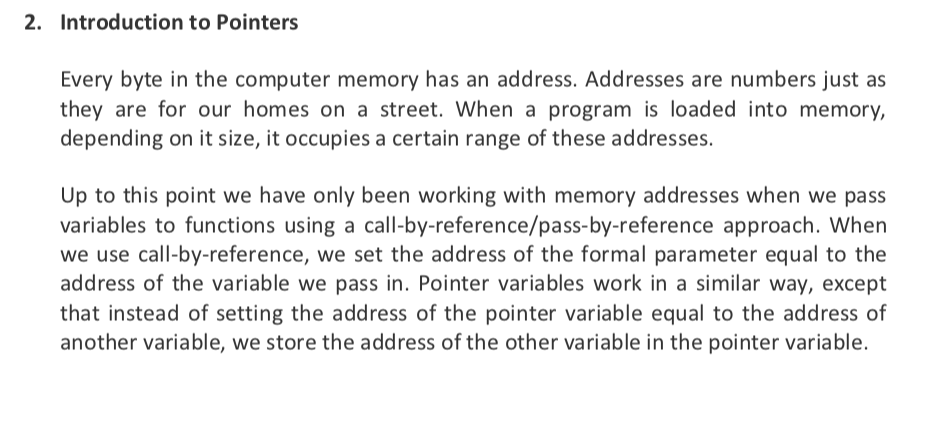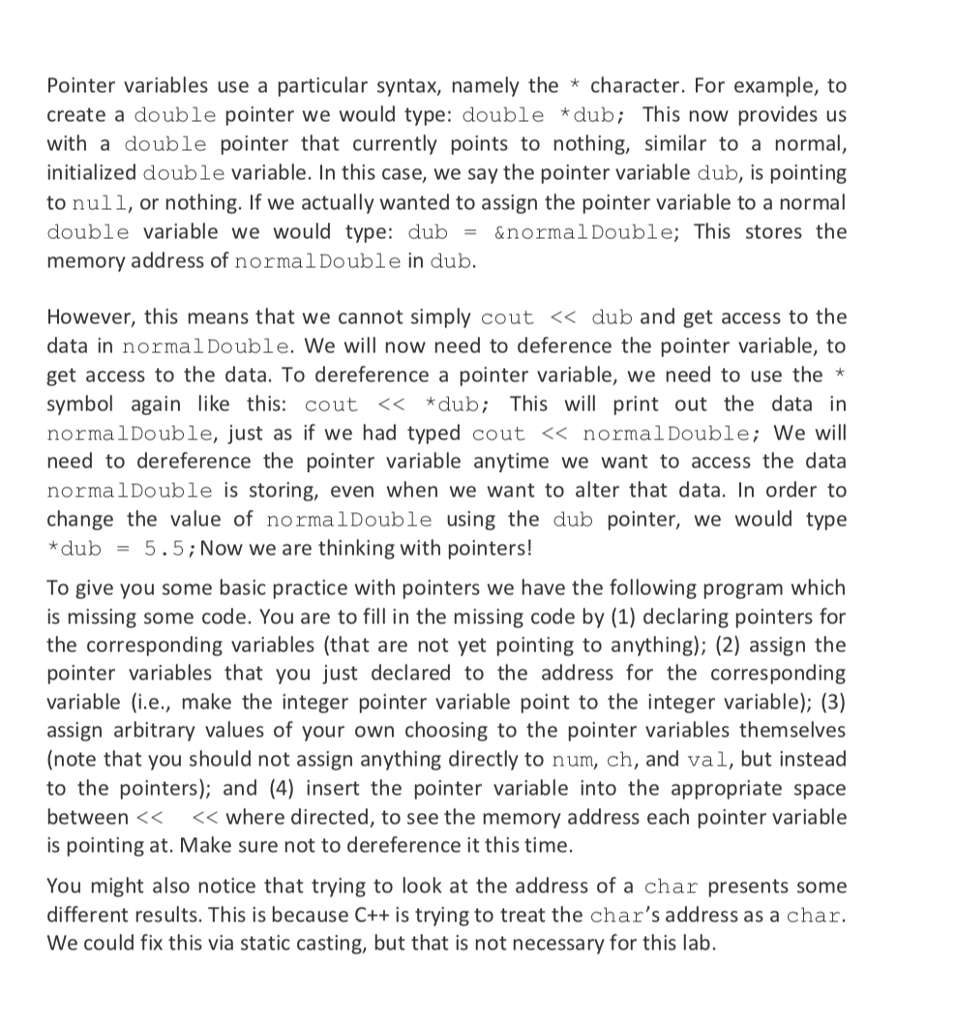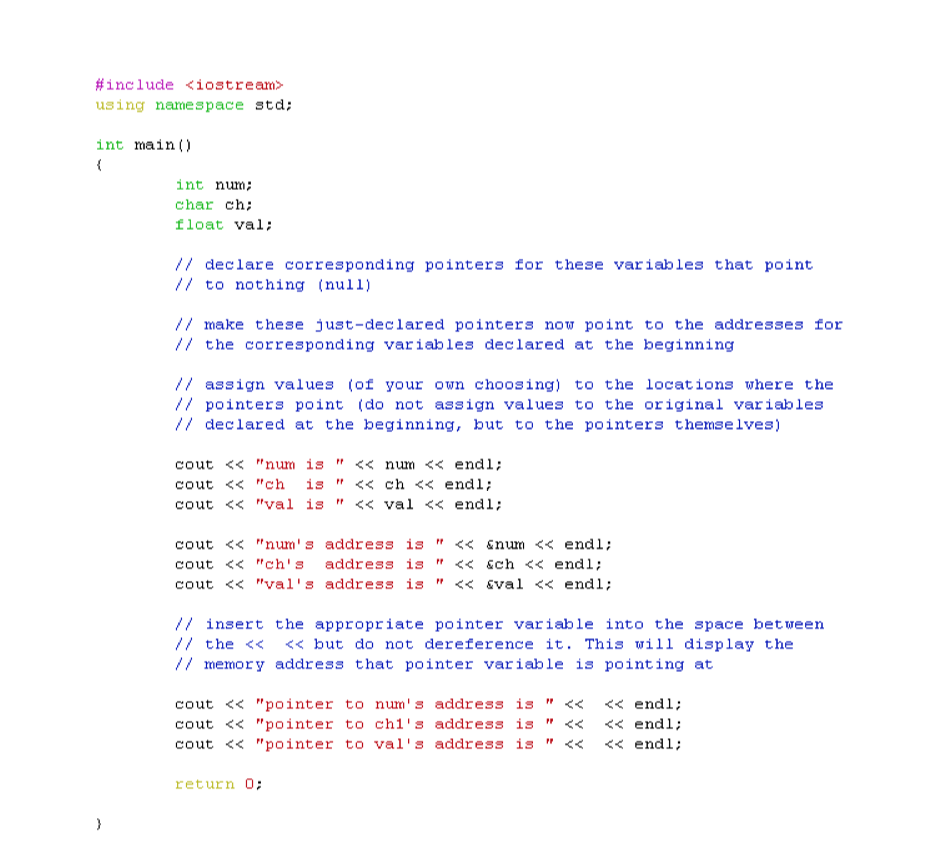Answered step by step
Verified Expert Solution
Question
1 Approved Answer
please do this ASAP 2. Introduction to Pointers Every byte in the computer memory has an address. Addresses are numbers just as they are for
please do this ASAP



2. Introduction to Pointers Every byte in the computer memory has an address. Addresses are numbers just as they are for our homes on a street. When a program is loaded into memory, depending on it size, it occupies a certain range of these addresses. Up to this point we have only been working with memory addresses when we pass variables to functions using a call-by-reference/pass-by-reference approach. When we use call-by-reference, we set the address of the formal parameter equal to the address of the variable we pass in. Pointer variables work in a similar way, except that instead of setting the address of the pointer variable equal to the address of another variable, we store the address of the other variable in the pointer variable
Step by Step Solution
There are 3 Steps involved in it
Step: 1

Get Instant Access to Expert-Tailored Solutions
See step-by-step solutions with expert insights and AI powered tools for academic success
Step: 2

Step: 3

Ace Your Homework with AI
Get the answers you need in no time with our AI-driven, step-by-step assistance
Get Started


